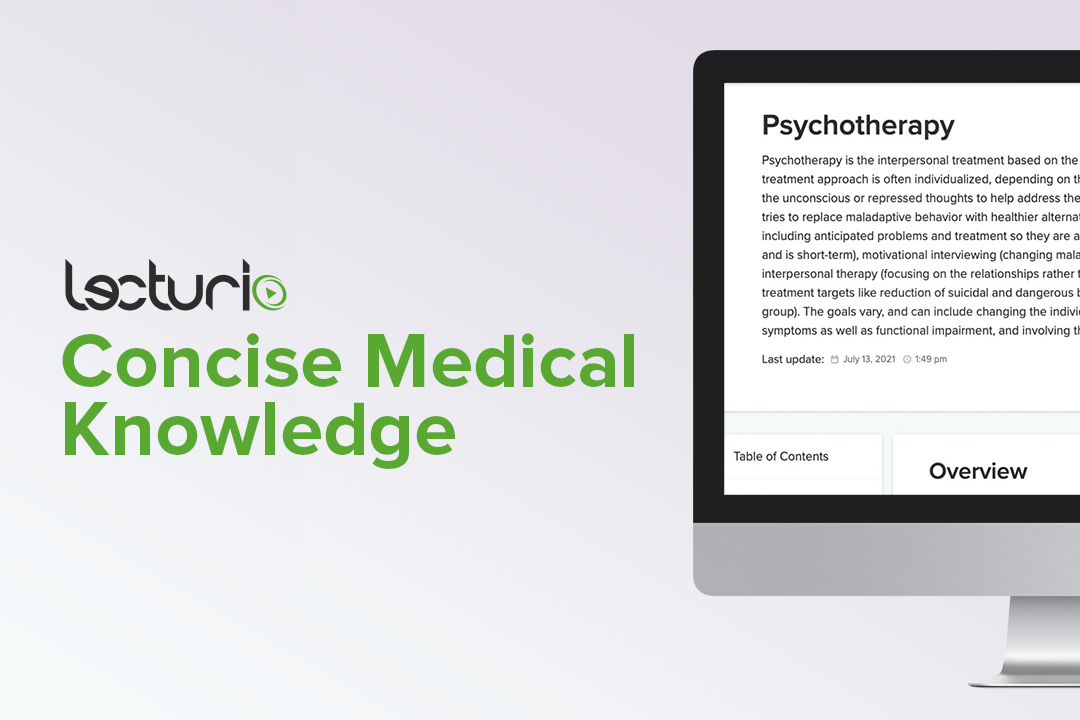Playlist
Show Playlist
Hide Playlist
Cognitive Behavioral Therapy (CBT)
-
Slides Panic Psychiatry.pdf
-
Download Lecture Overview
00:01 Cognitive behavioral therapy is actually an excellent treatment in helping people get over their panic. 00:07 So what is CBT or cognitive behavioral therapy? Well, it’s the cognitive and behavioral theories generally conceptualized panic disorder as an acquired fear of bodily sensations and particularly sensations that are associated with autonomic arousal in individuals with certain psychological and biological predispositions for the disorder. 00:32 So CBT really helps to rework a patient’s thinking and their behavioral response to their thought pattern. 00:39 In combination, CBT and medication management are very advantageous over using one alone. 00:49 So symptoms that CBT can directly address include panic attacks, anxiety about panic attacks and avoidance situations. 00:57 Key treatment and extremely useful and beneficial to the patient. 01:02 And some would argue that CBT is just as important as pharmacotherapy. 01:08 And while drugs may treat the symptoms, CBT helps to get to the root cause of the psychological disturbance. 01:16 Of note, CBT works best in people who are highly, highly motivated and who value a problem-solving approach. 01:26 Some techniques are providing the patient education about CBT, helping them with muscle relaxation, self-monitoring through journaling or homework assignments and cognitive restructuring, which involves really challenging their fears. 01:41 Also, breathing retraining is very helpful and so is exposure therapy to their fear stimuli that creates the panic Relapse prevention is very important and an essential part of CBT. 01:55 So CBT actually encourages patients to view any recurrence of panic as a lapse rather than a failure and to just reapply their coping skills to help them get through the next trigger. 02:08 That summarizes the panic disorder and now you know a little bit about the difference between a panic attack and panic disorder including the criteria for panic disorder. 02:20 And you should have a good understanding of various ways to treat it, noting that both medication and CBT therapy together can be extremely effective and useful.
About the Lecture
The lecture Cognitive Behavioral Therapy (CBT) by Helen Farrell, MD is from the course Anxiety and Stress-Related Disorders.
Included Quiz Questions
Which of the following statements regarding cognitive-behavioral therapy (CBT) is FALSE?
- CBT completely replaces pharmacological therapy.
- CBT combined with pharmacotherapy is more advantageous for the patient than using a single option.
- CBT is just as important as pharmacotherapy
- Breathing therapy, exposure, and muscle relaxation are some techniques used in CBT.
- CBT addresses panic attacks, anxiety about panic attacks, and avoidance sensation.
Which of the following statements about relapse prevention is TRUE?
- Encourages patients to apply their coping skills
- Involves addition of a Benzodiazepine
- Can only be done in a hospital setting
- Must be done one year after discontinuing CBT
- Must be done using an SNRI drug
Customer reviews
5,0 of 5 stars
| 5 Stars |
|
5 |
| 4 Stars |
|
0 |
| 3 Stars |
|
0 |
| 2 Stars |
|
0 |
| 1 Star |
|
0 |




